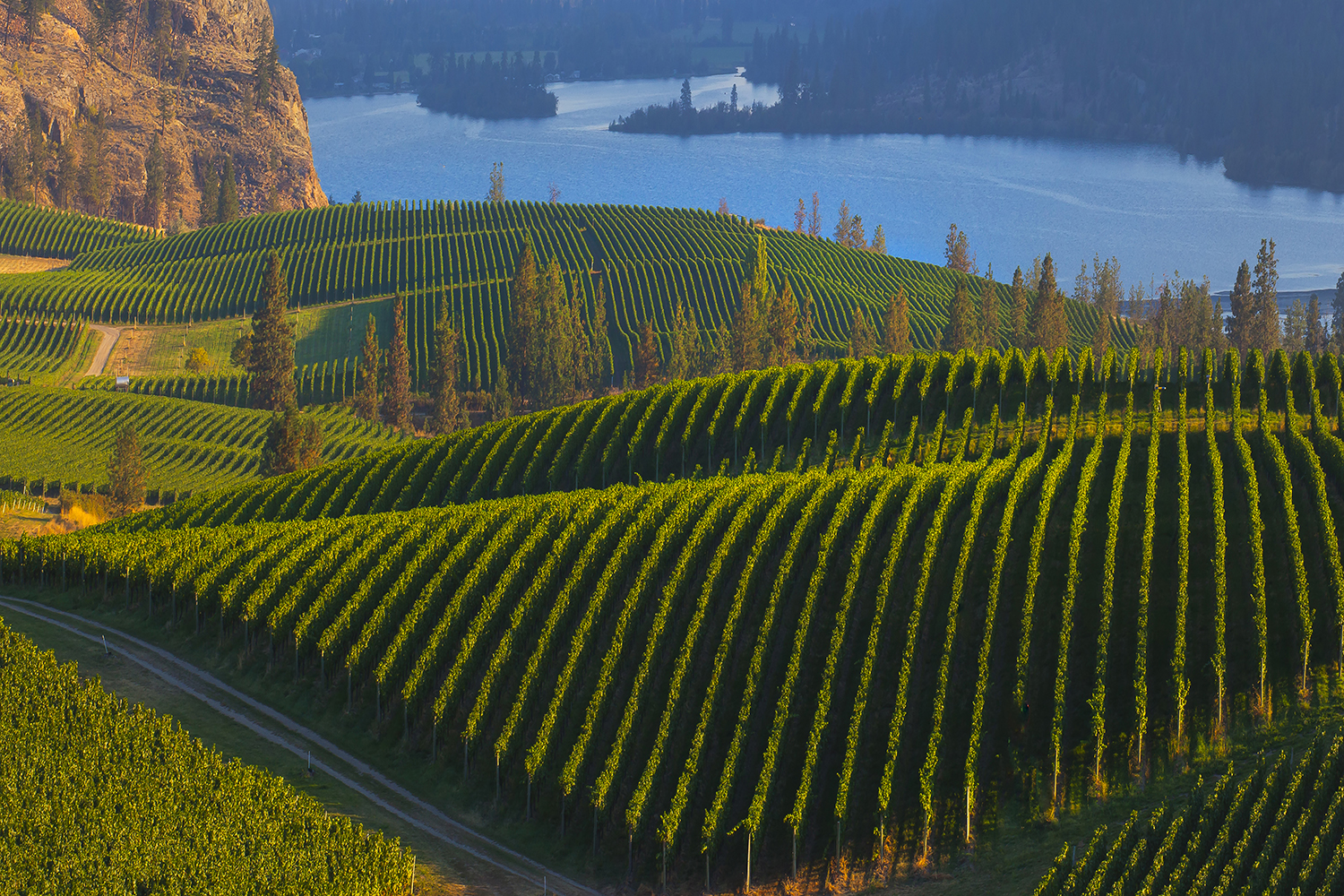There’s a movement emerging in British Columbia that involves some of the most storied wine grapes around. In the Okanagan Valley, set in high, desert-like land overlooking the eponymous lake, cool-climate varieties like Pinot Noir and Riesling are thriving. The picturesque terrain about 240 miles northeast of Vancouver used to be known for its sprawling fruit orchards. Increasingly, it’s admired for its sensational wines.
The valley is the native home of the Syilx, who moved within its range, following fish, game, and seasonal farmland. Relatively warm and dry, the Okanagan resides in the rain shadow of the nearby Cascade Mountains. Some genuinely fantastic wine is coming out of the area, ranging from Burgundian styles like Chardonnay to remarkable Syrah and intriguing Bordeaux blends.

Currently, there are almost 200 wineries in the Okanagan. The valley is split into eight main sub-regions, including the Namarata Bench, Okanagan Falls, and Osoyoos. The first commercial project, Calona Vineyards, dates back to 1932. It’s an imaginative mix of eye-catching natural terrain and a growing pack of wineries really setting out to take things to the next level. For those who like the great outdoors and high-caliber wine, the Okanagan will speak to you.
As the climate warms and growing seasons intensify, the Okanagan may prove to be a refuge of sorts, set right around the 50th parallel. Boasting a nice diurnal temperature shift and especially long spring and summer days (on account of being so far north), the region will likely be a safe home for more sensitive grapes for some time. Additionally, with water rights much more communal (think the opposite of California), the valley will likely be better suited to adapt to drier vintages.
Home to North America’s first indigenously run winery, inexpensive wine flights, and a beautiful lake surrounded by tree-studded bluffs, there are reasons aplenty to visit Western Canadian wine country. The fact that some of the most thrilling wines on the map are coming out of the Okanagan is probably the most compelling reason.
Here are some stops to make should you find yourself BC-bound with glass in hand:
Bella

Bella Wines is devoted to bubbles, from pet-nat to more traditional Champagne-style sparkling. The label works with grapes like Gamay Noir and Chardonnay, patiently producing natural wines with texture and finesse. You can practically taste Bella’s gentle cellar approach. You can even saber a bottle at the producer’s quaint tasting room in Naramata.
The Hatch

A winery collective of sorts, The Hatch is a West Kelowna outpost with a delightful and very bucolic setting. The labels are works of art and the juice is of quality. Adventurous palates will appreciate the broad selection, from Gewurztraminer and orange wine to Cabernet Sauvignon. There are even sibling labels in the mix, like Sauv Blanc, Chardonnay, and Cab Franc from Screaming Frenzy.
Martin’s Lane

The winery at Martin’s Lane is a modern marvel, a six-level gravity-flow facility that’s very easy on the eye. Built into the hillside that spills into the lake, the architecture alone is worth witnessing. The wine’s good, too, revolving around elegant takes on Riesling and Pinot Noir. There’s even a bit of ice wine in the mix. Be advised that it’s an appointment-only venture.
Gray Monk

One of the older Okanagan operations, Gray Monk launched in the early 1980s. Merlot, Petit Verdot, Pinot Noir, Pinot Gris, and even Port can be found and enjoyed here. There’s also a house restaurant, The Lookout, which claims to have the best patio in the region along with cocktails, should you need a break from wine.


